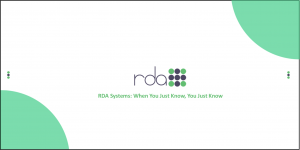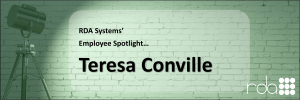How Business Intelligence Software Can Help Your Local Government Make Smarter Decisions, Boost Efficiency, and Save Money
In a world where data reigns supreme, Business Intelligence (BI) software has become a critical tool for many industries. And when it comes to the heart of any community (the local government) its impact is nothing short of extraordinary.
The city of Los Angeles, for example, uses BI software to track their crime rates. It allows them to identify which areas of the city are the most affected and thus increase police patrols in those areas. This has led to reduced crime rates.
Meanwhile, the city of San Francisco uses BI software to identify schools that might be struggling when it comes to their performance. Identifying them allows the city officials to develop interventions to help those schools improve.
And the city of Austin has harnessed the power of BI software to track the performance of its water system. They use it to identify leaks and other problems, and then develop strategies to improve the efficiency of the system as a whole.
As you can tell, with the power of BI software local authorities can make better-informed decisions, streamline processes, and optimize financial resources.
Let’s look at each of these in more detail.
Making Better Decisions
Within the realm of governance, decisions impact the lives of countless citizens.
As local governments handle vast amounts of data related to demographics, public services, and infrastructure, extracting valuable insights can be a daunting task if one doesn’t have the appropriate tools.
After all, without data, any decision is a mere guess.
This is where BI software plays a crucial role. The data that it provides can be used to track trends, identify problems, and even develop solutions. BI solutions offer user-friendly data visualization and analytics tools that enable local government officials to comprehend complex datasets.
If that sounds really complex, rest assured it isn’t. Thanks to interactive dashboards and reports that consolidate information from multiple sources, BI software provides a holistic view of the municipality’s performance.
This, in turn, empowers city planners, policymakers, and decision-makers to access real-time data on revenue, expenditure, public service delivery, and community engagement.
By analyzing this data, local governments can identify patterns and trends, allowing them to make data-driven decisions.
For example, BI software can pinpoint areas with high accident rates, prompting authorities to take corrective measures and improve road safety. Is it different road signage that’s needed? Or perhaps the local community should be engaged with, or a lower speed limit applied?
Similarly, it can help optimize public transportation routes based on ridership data, leading to better bus routes, connections, and resource allocations. This would result in an enhanced commuting experience overall, and perhaps even have a knock-on effect on air pollution. A win-win situation.
Improving Efficiency and Performance
Another benefit of BI software is improved efficiency and performance.
Efficiency is one of the cornerstones of local governance. Streamlined operations translate to better service delivery and, thus, to higher citizen satisfaction.
Not only can BI software help optimize processes by automating processes, it can also provide employees with access to the information they need to do their jobs more effectively.
For example, a city might use BI software to automate pretty much any process they’d like, starting with the ones that currently take up most of their human resources.
Take issuing building permits; automating this task would free up a lot of staff time which they could then use to focus on other more important tasks.
But how much time, exactly?
BI software can help here too. With BI tools at their disposal, local governments can monitor key performance indicators (KPIs) in real-time. This ability empowers them to promptly identify bottlenecks, inefficiencies, or areas where improvements are needed.
For instance, BI software can track the response times of emergency services, allowing municipalities to optimize the allocation of resources and improve overall responsiveness.
Moreover, BI software assists in resource optimization by predicting demand patterns and aligning the workforce accordingly. This results in a more effective use of personnel and assets, and better outcomes for the community in general.
Saving Money
Saving money – that’s what all of the improvements in decision making and efficiency really translate to.
If a government improves decision making regarding the areas in which to target crime-prevention techniques, it will save money due to decreased crime rates. If a government increases their ambulance service efficiency, it will save money.
Whether directly or indirectly, BI software saves local governments money – it’s a real and tangible benefit of implementing BI software.
By improving efficiency and optimizing resource allocation, municipalities can reduce operational expenses while maintaining or even enhancing service quality.
BI software also helps in identifying instances of fraud, waste, and abuse of public resources. By analyzing financial and procurement data, authorities can detect irregularities and take appropriate action to prevent further losses.
Moreover, BI software can aid in identifying potential cost-saving opportunities.
For instance, by analyzing energy consumption data in public facilities, local governments can implement energy-saving measures and reduce utility costs. Similarly, by analyzing procurement data, they can negotiate better contracts with vendors, leading to cost savings on supplies and services.
But it’s not just the present financial situation of a local government that BI can help improve.
Predictive analytics within BI software further aid in creating accurate forecasts for future budget planning. By estimating future revenue and expenditure trends, local governments can make informed decisions about fiscal policies and project funding.
Also, BI software might reveal that a specific public program is underutilized despite significant funding. Armed with this knowledge, local governments can reevaluate the program’s effectiveness and reallocate funds to initiatives that benefit more citizens, thereby maximizing the impact of their investments.
Bonus: Enhanced Citizen Engagement and Satisfaction
Apart from internal efficiencies, BI software can also contribute to improved citizen engagement, trust, and satisfaction. By analyzing data from public feedback and social media, local governments can gain valuable insights into citizens’ preferences, concerns, and expectations.
With this information at hand, local governments can design targeted policies and programs that align with citizens’ needs, thereby enhancing overall satisfaction.
BI software can also be utilized to measure the success and impact of various initiatives, allowing authorities to fine-tune their approaches based on real-time feedback.
Even More Ways to Use BI Software?
In this article, we highlighted the main benefits that local governments can get from using BI software.
By leveraging data-driven decision-making, local authorities can address community needs proactively, allocate resources more efficiently, and streamline operations for better service delivery. Additionally, BI software enables municipalities to forecast future trends, optimize resource allocation, and achieve substantial cost savings.
Yet, as the technology evolves, it’s likely that governments will find even more ways to improve the lives of the people in their communities.
It’s only by investing in powerful BI solutions now that local authorities can position themselves at the forefront of innovation in public administration.
Discover how RDA Systems can help your organization leverage the power of BI software.





